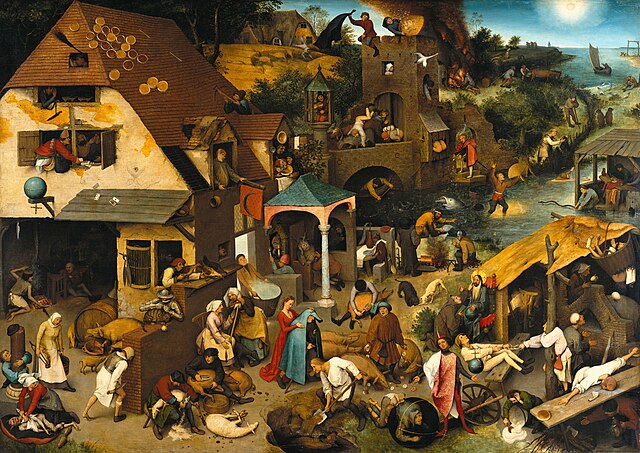A legend is a genre of folklore that consists of a narrative featuring human actions, believed or perceived to have taken place in human history. Narratives in this genre may demonstrate human values, and possess certain qualities that give the tale verisimilitude. Legend, for its active and passive participants, may include miracles. Legends may be transformed over time to keep them fresh and vital.
In this 1891 painting of Lady Godiva by Jules Joseph Lefebvre, the authentic historical person is fully submerged in the legend, presented in an anachronistic high medieval setting.
Holger Danske, a legendary character
Giants Mata and Grifone, celebrated in the streets of Messina, Italy, the second week of August, according to a legend are founders of the Sicilian city.
The mediaeval legend of Genevieve of Brabant connected her to Treves.
Folklore is the body of expressive culture shared by a particular group of people, culture or subculture. This includes oral traditions such as tales, myths, legends, proverbs, poems, jokes, and other oral traditions. This also includes material culture, such as traditional building styles common to the group. Folklore also encompasses customary lore, taking actions for folk beliefs, and the forms and rituals of celebrations such as Christmas, weddings, folk dances, and initiation rites.
Netherlandish Proverbs by Pieter Bruegel the Elder, 1559
A European folk tale, Little Red Riding Hood; illustration by Jessie Willcox Smith, 1911
A German folk tale, Hansel and Gretel; illustration by Arthur Rackham, 1909
Indian Folk Worship at Batu Caves, Selangor Malaysia








